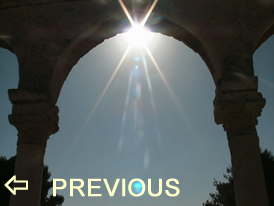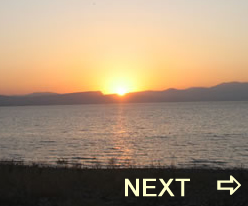|
|
|
 A Bible Teaching Ministry of Galyn Wiemers A Bible Teaching Ministry of Galyn Wiemers
|
|
|

|
| |

|
September 5 - Evening
"Hear this, you elders; listen, all who live in the land. Has anything like this ever hapened in your days
or in the days of your forefathers?
Tell it to your children,
and let your children tell it to their children,
and their children to the next generation."
- Joel 1:2-3
|
 |
|
| The Locust, the Babylonians and the Lord will Invade |
|
|
Joel lived during the most devastating locust invasion of the land of Judah. Joel begins his book petitioning the leaders (elders) and all the people of the land to consider what he is about to write since nothing like the current locust invasion had ever happened. Never in their lifetime or in their national history had locust been so thick and destructive. The land was being overrun with locusts and the locusts were destroying not only the crops, but anything they could devour. Joel then tells the elders and the people of the land that this destruction along with his words need to be considered, remembered and handed down to future generations, because future generations will see this contemporary event reenacted at least twice:
1) the Babylonian invasion that was looming on Judah’s historical horizon
2) a day in the distant future when the Lord himself would invade not only Judah, but the whole world.
The locust invasion in Joel’s day was judgment for national sin. Likewise, the coming Babylonian invasion would also be judgment on a rebellious, complacent nation. If the locust devoured the land, but the Babylonian invasion was much more severe, how unbelievable must the judgment in the distant future be on that day Joel called the Day of the Lord? In fact, in 2:11 Joel asks:
“The day of the Lord is great; it is dreadful. Who can endure it?”
|
|
 |
"No one, then, can be a believer and at the same
time be licentious."
– Clement of Alexandria
(150-215 AD)
|
 |
Marriages were arranged and brides were selected by the family in bible times. Love came after marriage. The modern western view of sifting through people in order to find one to fall in love with and
then marry is different. |
|
| |
|
|
| |
|
 |
 |
 |
 |
| for my work |
evangelism |
revival
(click Nation or World box for daily update) |
Morocco - a loving Christian response to an earthquake open doors among the Berber minority |
|
|
| |
 |
 |
 |

|
| A tomb in the Kidron Valley traditionally called the Pillar of Absalom or Absalom’s MonumentIt was constructed during Jesus’ lifetime. The Bordeaux Pilgrim referred to it as the Tomb of Hezekiah in 333 AD. It was first associated with Absalom by Benjamin of Tudela in 1170 because of 2 Samuel 18:18. The actual person or family for whom this tomb was prepared is unknown. The architectural style includes both Egyptian and Greek influences, which would have come from the two kingdoms that dominated Judea between 300-100 BC. The Egyptian influence came from the Ptolemys of Egypt, and the Hellenistic style from the Seleucids, who were Greeks ruling in Syria. The lower square is cut from the bedrock. It is topped with a finely-cut circular stone with a conical top that was cut from one single stone. Directly to the left of this tomb is an eight-chambered catacomb with well-preserved carved stone. The catacomb is called the Cave of Jehoshaphat. The Pillar of Absalom may have been a monument for the burial chambers in the Cave of Jehoshaphat, cut into the cliff behind it. (click on image for larger size) |
The three crucial, and, the only, passes through the mountainous foothills of Mount Carmel to enter the historic Jezreel Valley (or, the Valley of Armageddon). (click on image for larger size) |
| |
|
| Details and Explanation of Sets & Reps Devotional System Here |
 |
|
|
| |
| |
| |
| Reps & Sets is a daily Bible devotional for Christians from Generation Word Bible Teaching used each morning and evening. |
|
|